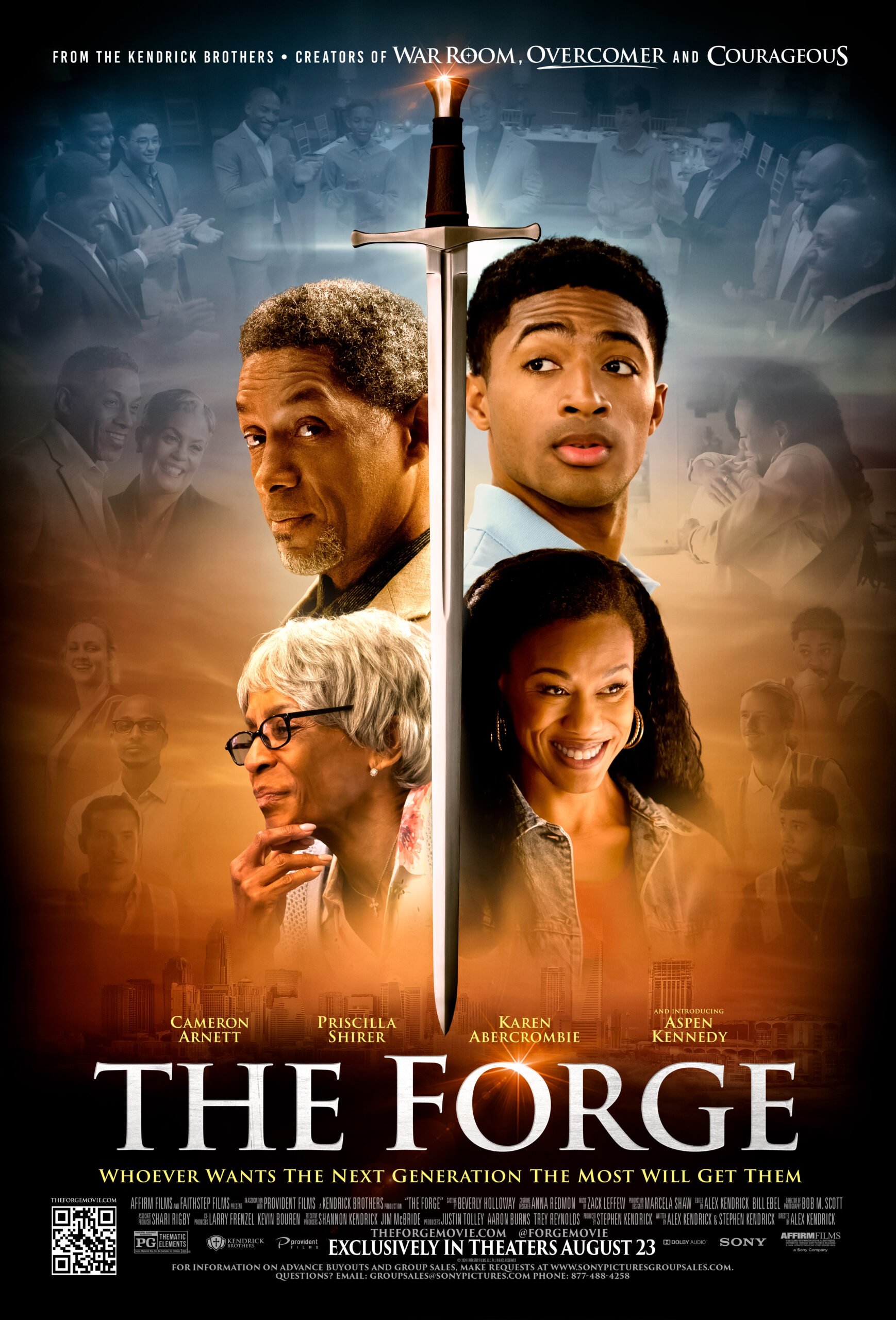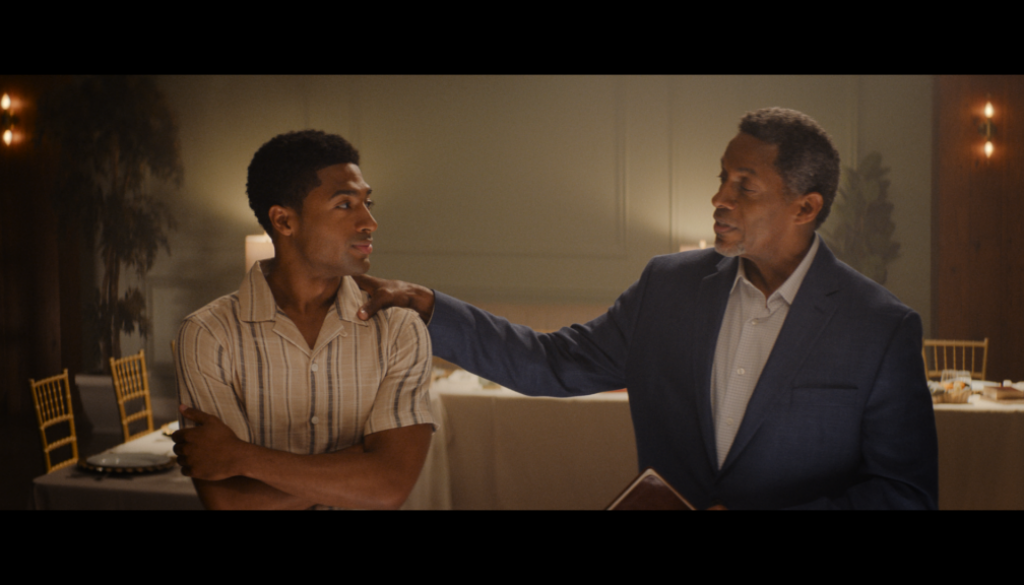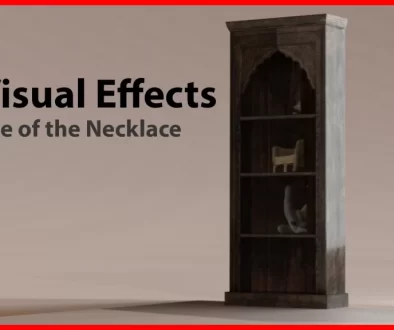Case Studies
A Story of collaboration, A Detailed look at The Forge

The Forge is the next film by Kendrick brothers, creators of War Room, Ovecomer and more. The forge is an inspiring story about a young man’s journey for purpose through faith and discipleship. The Film was set to release in theaters August 22, 2024 and Now on Netflix and others.
Directed by Alex Kendrick, Like many of the previous Kendrick brothers’ films such as War Room and Overcomer, Alex Kendrick wrote the screenplay alongside his brother Stephen Kendrick.
The film was shot on Alexa S35 with Anamorphic lenses in Albany, Georgia, by cinematographer Bob Scott, who has been a key collaborator with the Kendricks, having lensed many of their films over the years.
Color grading was led by Keith Roush in Atlanta at Roush Media’s facility for the HDR and SDR versions. Additional color was provided by Kevin Stratton for the HDR and theatrical releases.
Old Friends, New Journey
“The Forge” marks the 5th official collaboration between Keith and the Kendrick brothers. Keith, having graded many of their projects before, was intimately familiar with their style and the direction they like to go.
“After many films together, I know exactly what Alex likes, and we have a very close bond and collaborate well together to meet that vision. The trust and mutual respect we share for each other is genuine. My clients become my friends, and we share the vision for how the film will impact people and a love of the craft and process. I’m always invited to help kick off production at what the Kendricks call bootcamp. That includes a nice lunch, and then I spend the rest of the day meeting with all my counterparts on the team: DP, DIT, Editor, and some producers to ensure we are ready for the coming battle. My team fully supports the production over the shoot & post with dailies, on-set supervision of VFX and data, and workflow consulting.”
Vision and Look Development
“The film’s look was initially based on the Kendricks’ previous work, ‘War Room’. Since Roush Media had also handled the DI for ‘War Room,’ Keith was able to pull materials from the ‘War Room’ archive to re-familiarize himself with the material. Keith describes the look as follows:
“I would describe ‘The Forge’s’ look as slightly warm, rich, and colorful yet filmic. It features lots of soft highlights with a touch of grit and grain to evoke the urban feel of the story. The film print emulation is rich in contrast without crushing the shadows, allowing dark skin tones to resemble milk chocolate thus keeping the focus on the performances.”
Baselight 6 had recently become available to the in beta, so Keith used a lot of the new tools. From Look Development to subtle Halation, flair and grain texture control. The AI face tracking proved to be an invaluable tool in Keith’s toolbox, enabling quick and precise manipulation of the talent’s faces across the film.
Starting the Grade
Color grading for the film began long before the actual grading process commenced. Keith created a show LUT and then transferred the look into Arri’s ALF4 file format for loading into the camera.
“We discussed the film’s vision early in pre-production, working with Bob Scott (DP) and Alex (Director) to craft the film’s look from a camera test. Developing a look for a project and then having the cinematographer actually use that in-camera during production helps to further refine the process and allows the DP to light the show based on the intended final look, rather than starting with a stock 709 LUT and figuring it out later. This approach ensures that the images maintain consistency across the film and gives us an advantage once color grading begins,” says Keith.
This approach also means that the director, editor & the studio are viewing something closer to the final grade throughout the entire editing process. Once the final grading began, Keith was able to apply the same look he had developed in Baselight to everything, providing a strong starting point for further refining the image.
Workflow
The grade was completed for three versions: HDR, SDR, and Theatrical (P3 48 nits). This presented an interesting technical challenge because Keith aimed for all versions to be virtually identical while maximizing the benefits of each.
“Due to the schedule and how busy Alex Kendrick is, at the start of the DI, we provide a calibrated monitor to the offices of the Kendricks to allow for onsite color grading / remote color review sessions. Sometimes we are in person, and sometimes we do this with remote color sessions. Alex and I like to spot various parts of the film together and set some looks to make sure we are on the same page. I get a feeling for any particular special concerns to look out for as I continue the grade. The foundation of the film was already established before the session, and adjustments were made based on Alex’s feedback.
From HDR to the Theater
While the initial grade was done in HDR in preparation for the film’s eventual release on streaming (svod), “The Forge” is also receiving a large traditional theatrical run. This posed a significant technical challenge for the grading process. The HDR grade was completed at 2000 nits on the new Flanders Scientific XMP650. The decision to master at 2000 nits was made to accommodate the increasing brightness and color accuracy of consumer televisions, enhancing the potential for the future.
Dolby Vision was employed to map the 2000 nit HDR grade down to 100 nits for SDR and 48 nits for theatrical release. Kevin Stratton, Keith’s assistant and an additional colorist on the film, commented, “Going from 2000 nits down to 48 nits, even with Dolby’s smart approach and often excellent image translation across different brightness levels, required more than just a traditional trim pass to maintain the original integrity of the grade.”
The Director Alex Kendrick says “ The team at Roush media truly did excellent work and collaborating with them is always fantastic. They always make our films look stunning and bring the images to life. We are excited to see how audiences around the globe respond to the hard work and care that has gone into the creation of this film.”


